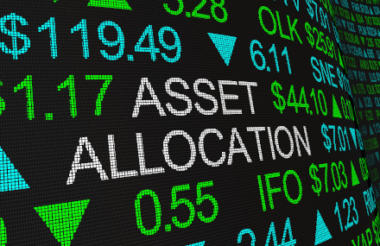It was with some relief that portfolio values recovered swiftly from the March 2020 Covid lows, although as pleasing was that portfolio yields recovered too, to the extent that a discretionary charity portfolio can now comfortably generate an income yield of 2.75%. The key going forwards is whether yields are sustainable, and by sustainable we mean both in terms of absolute value but also in regard to a portfolio’s overall environmental, social and governance (ESG) impact.
The challenge investment managers have faced over the past decade is in constructing and maintaining balanced portfolios with a broad spread of assets, while gilt and bond yields have been so low. At the time of writing, UK sovereign yields had spiked above 4% following the failure of the then chancellor Kwasi Kwarteng’s mini-budget, although 10-year gilt yields are now settling at around 3.5% as the market appears to be more comfortable with prime minister Rishi Sunak and chancellor Jeremy Hunt.
Whether this yield remains current, we are confident in our assessment that bond and gilt yields have entered a new period of higher rates beyond the era of quantitative easing (QE). With both the US Federal Reserve and Bank of England in tightening mode, interest rates are expected to rise, although there is also the belief that we are nearing the end of this current period of interest rate rises, and some interest rates cuts could be expected in late 2023 or early 2024.
Interestingly, as interest rates have been at such low levels since the global financial crisis of 2008-09, many UK gilts were issued with very low coupons (annual income yield). This in turn means that much of the expected return over the coming years will be in capital, and therefore attractive in total return terms, although it does present an ongoing challenge for those charities which are restricted and unable to pay away capital, or benefit from total return investing.
For example, a buyer of the UK Treasury 30 January 2026 issue can only expect an income flow of 0.125% per annum but a total return (income and capital growth) to redemption of approximately 3.3%. Staying within the fixed income element but within corporate bonds, which were also very weak following the failed mini-budget of September 2022, any purchases around these lower levels will also result in more attractive income returns, as well as the potential for higher total returns as the capital recovers.
In terms of equity dividends, Covid came as a blessing for some, as many companies were able to cut or suspend their dividends without adverse market reaction. A perfect example is Shell (formerly Royal Dutch Shell); pre-pandemic the company had not cut its dividend for many decades, it was above 6% and becoming an issue for the company. During the pandemic, many companies cut their dividends, rebasing them at much lower levels. Post-pandemic, companies have been increasing their dividends more slowly, allowing spare cash flow to be reinvested in the company, used for share buybacks, or when they want to distribute additional funds to shareholders, as special dividends. With recent sterling weakness, or in more accurate terms, US dollar strength, we should see the value of dividends paid by UK-listed companies increase.
As gilt yields remained low and inflationary pressures continued to rise through 2022, we continued to reduce bond exposure on our charity portfolios in favour of infrastructure assets, particularly those funds focused on renewable energy and energy efficiency. Although they were also impacted by the mini-budget in September 2022, their share prices have recovered well and continue to be supported by high inflation and high power prices.
The slight concern going forward is a UK government imposed revenue-cap on renewable energy producers, similar to the EU’s proposed €180/MWh revenue cap, as this could further impact the roll out of more renewable assets at a time of heightened energy uncertainty. An early criticism of investing in the renewable sector was the fund size and liquidity, but with several funds around or above £1bn in size, this is less likely to be an issue. Furthermore, these renewable funds have generated solid multi-year returns in spite of the volatility in September and October 2022, and comfortably in excess of the UK equity market over a similar timeframe.
So, at the time of writing (early fourth quarter 2022) the challenges we have faced over the past decade in terms of asset allocation are easing and we have introduced our first gilts in over 15 years as yields are now much more attractive (although still a challenge against high inflation). We are also hopeful that, over the next year or so, we can return to having a meaningful allocation to gilts and supra-nationals. This would in turn reduce portfolio volatility should we see renewed periods of market stress and uncertainty.
Furthermore, with a much deeper pool of liquid and sizeable infrastructure funds, particularly in the renewable and energy efficiency sectors, we have an alternative area to invest in with confidence, supported by their high and sustainable income flows. The Russian invasion of Ukraine and the subsequent impact on gas supply and power prices, and the move to be carbon neutral by the end of the next decade will inevitably see even more investment into renewables, be it in offshore wind, solar and batteries, and hopefully one day we will see tidal power funds seeking investors too.
In summary, ongoing uncertainty around the world continues to present investment managers with challenges. However, it has certainly become easier to construct portfolios in terms of asset allocation.
Mark Powell is head of charities at JM Finn
Charity Finance wishes to thank JM Finn for its support with this article









